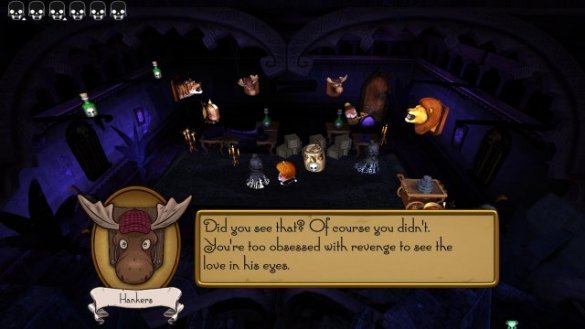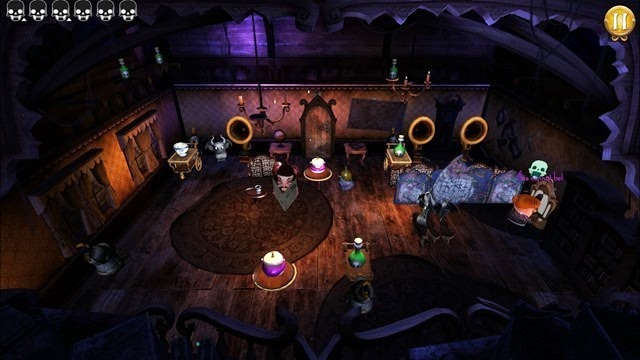Bored to death.
Once upon a time, there was a little girl named Coraline. One day, exploring her household, she found an otherworldly version of the life she longed for, but it would come at the price of her real family. Coraline had to be smart and strong-willed, and follow her heart to escape and be with her true mother and father in the face of her materialized wishes and desires. The story of this little girl can be found in the 2002 novella Coraline, written by Neil Gaiman, as well as the resulting 2009 stop-motion film, which earned both Oscar and Golden Globe nominations for its haunting charm and beauty.
The latest title from indie studio The Odd Gentlemen, Wayward Manor, also sprung from the brain of Neil Gaiman, who also authored American Gods, soon to be an original drama on the Starz network. But gamers looking for the haunting beauty, charm, and magic of Coraline may as well sew buttons on their eyes—they won't be found here.
The puzzle game, according to Steam, invites players to “jump into the afterlife of a disgruntled ghost, trying to reclaim his house from its newfound owners.” Wow, Neil Gaiman is developing an adventure game that sounds like a cross between Maniac Mansion and Beetlejuice. I'm in. This should be a smash hit… in theory.
In practice, the game resembles little more than a haunted skin of the Rube Goldberg contraption game The Incredible Machine back in the early '90s for DOS. Players, in the role of the spirit, are given a room with a variety of knick-knacks and tchotchkes they can “possess” to scare the inhabitants of the room. And generally by “scare,” the game means “whack them on the head with a bottle.” Sadly, (very) few of the more clever scares were not revealed until the level was over, simply because I just konked people on the head with bottles.
Various inhabitants are frightened by various things more so than others. The eldest of the family, Theopolis, is afraid of the dark, so making candles go out gets him shaking in his boots. Dagmara, the maid, fears rodents, Mrs. Budd fears ugliness, the twins fear health food, the mailman fears Tea Party Republicans, the yoga instructor fears things made with bananas, the guy who always “forgets” to bring something to a potluck fears Michael McDonald—okay, I kid with those last three. But seriously, there were so many family members I stopped caring about their fears.
I was usually whacking them on the head with a bottle anyway. The story really doesn't care either, as it doesn't explain very much beyond the inhabitants beyond their names and how they're related, so whatever. Bottle to the noggin it is! The one character the Manor shows sympathy for, Polly the orphan, has just as much personality as the others, but for some reason we're supposed to protect her while freaking out the rest of the crew. Probably because of her cute stuffed bunny.
The story, for what it's worth, has the Neil Gaiman touch. The narrative is told by Wayward Manor itself (sure, the house talks, why not?) and features the slightly-dark prose Gaiman gained fame for: a macabre mixing of childhood dreams and horror novels. The problem, though, is that there isn't enough of it. Players get a few lines of dialogue in between select stages, but not enough to matter. Between the Manor's prattling about its boorish inhabitants and its whining about how it just wishes it could be left alone, even the sparse nugget of decent dialogue gets buried under the rest of the Manor's monotone monologue.
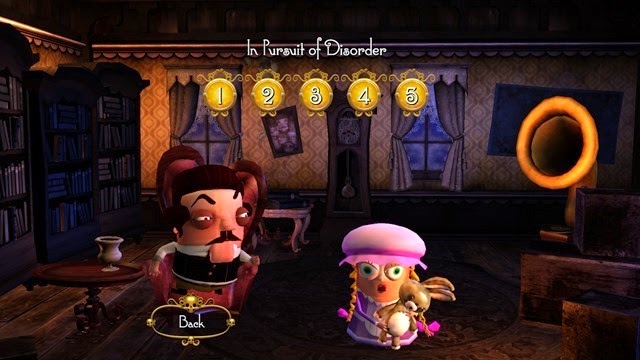
Gameplay fails to pick up the slack from the weak, nearly non-existent storyline. The level design in each chapter introduces a new mechanic or fear in each opening level, then proceeds to rehash it throughout the rest of the chapter. Mrs. Budd fears ugly, nasty things, so you should get her next to a doll in the likeness of herself and possess the vomiting doll to upchuck on her. Yes, you read that right: one of the goals is to throw up on the lady of the house. And then you can do it in the following level. And the one after that, and after that, and any time she shows up in later chapters ad nauseum (pun intended). It's boring.
I've been picking up a few puzzle titles lately like the reskin of the ever-popular '90s NES classic Dr. Luigi as well as the Wii U eShop puzzler Pushmo World. Dr. Luigi, whenever I clear out a bottle, gives me a sensation of victory, and makes me wonder how many viruses will be in the next one. Pushmo World gives me a sensation of victory and makes me wonder what the next one will look like and how I will climb it. Wayward Manor gives me a sensation of meh, and makes me wonder how much longer the game will go on. I get more sensation from biting into a York Peppermint Pattie.
If anything was a scare, it was most likely the atrocious graphics. I know I usually beat the drum that sings the rhythm of “gameplay over graphics,” but considering how weak the gameplay was, I would have at least liked it to look nice. Animations were choppy, and the people look cartoonish, and not the good kind of cartoonish invoking pictures of Disney, Warner Bros., or even early Nicktoons. All of those would have been an improvement from Wayward Manor's animations descending from the early days of CD-ROM.
The game's saving grace is its soundtrack, which isn't expansive by any stretch, but the few snippets of music are fairly good, standing as the one element which brings forth an eerie, Haunted Mansion-esque feel to it. However, like the storyline, you'll get way too little of it to enjoy it.
I expected a lot more from Wayward Manor with names like Neil Gaiman and The Odd Gentlemen, whose first title, The Misadventures of P. B. Winterbottom, was an acclaimed hit for XBLA and Steam. The game was meant to put players into a spooky kind of mindset, but everything about it is just frightfully boring. The Manor wants all living inhabitants out? Thanks, house; I'll show myself the door.
Code provided by publisher. Review based off PC version via Steam.
-
Repetitive, boring gameplay.
-
Too many characters, not enough backstory.
-
Story is sparse, if existent at all.
-
What little story there was had the macabre humor signature of Gaiman's work.
-
Levels are tedious, and working through them feels like a chore.
-
Animations choppy.
-
Graphics reminiscent of early CD-ROM titles.
-
At least the music was good. That's something, right?
wayward-manor
-
wayward-manor #1
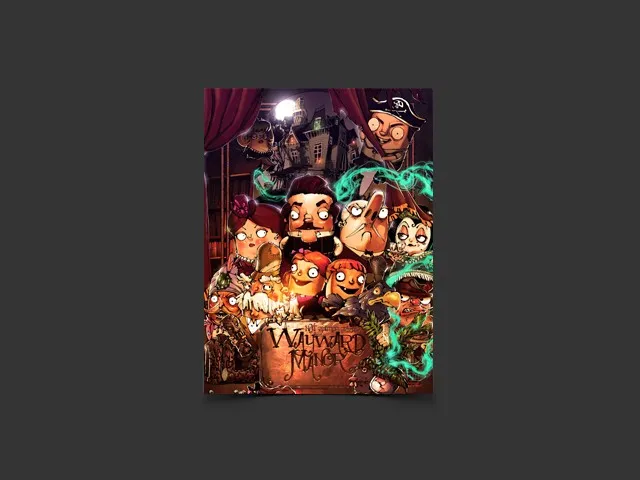
-
wayward-manor #2
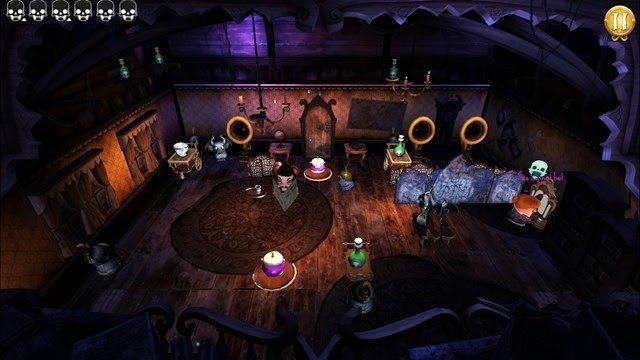
-
wayward-manor #3
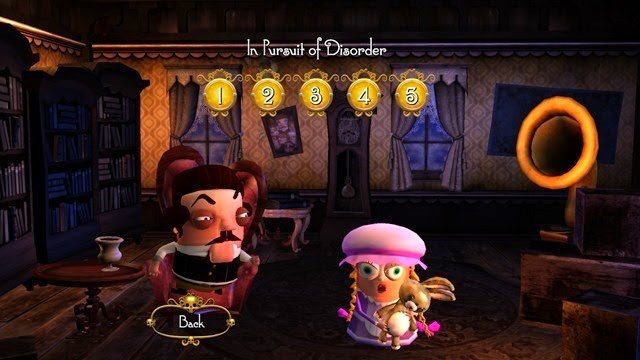
-
wayward-manor #4
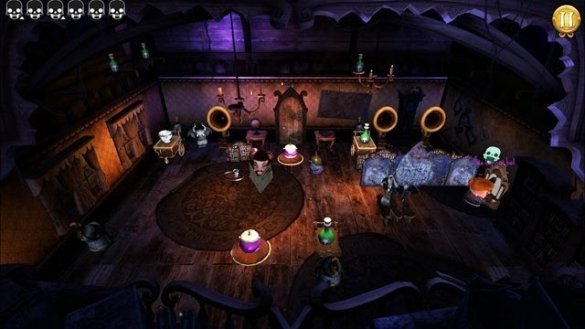
-
wayward-manor #5
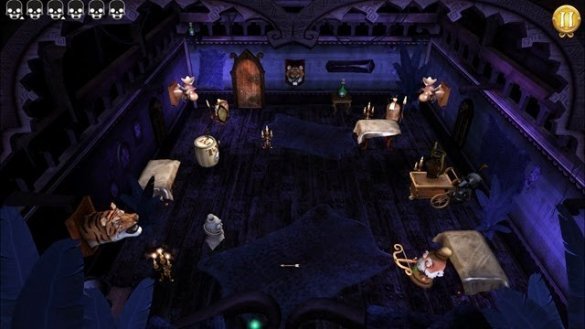
-
wayward-manor #6
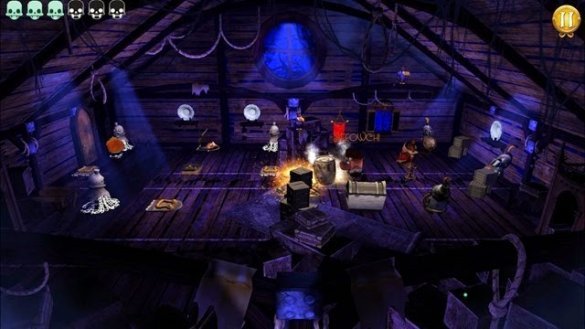
-
wayward-manor #7
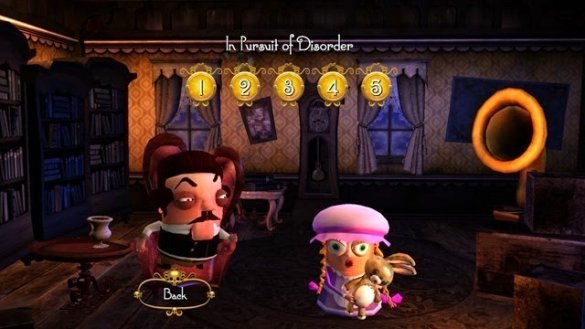
-
wayward-manor #8
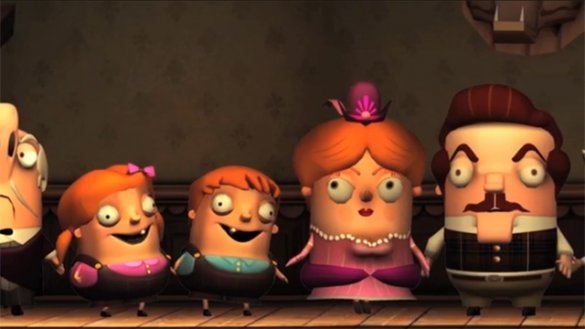
-
wayward-manor #9
